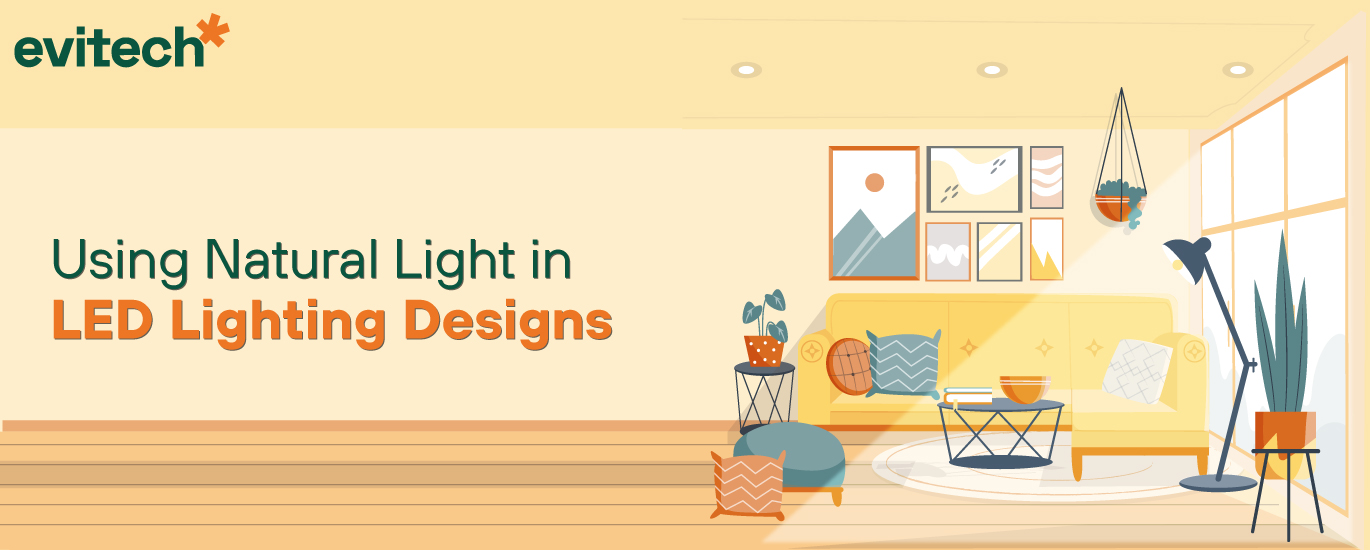Using Natural Light in LED Lighting Designs
Natural light is a free resource, so it is advisable to consider it for lighting designs. By maximizing its use, we can improve the energy efficiency of a building.
Natural light can reduce the need for artificial lighting in several ways, some active and some passive. An example of an active measure is the use of automatic controls to modulate LED lighting based on daylight. A passive measure has an architectural design that maximizes daylight intake.
LED lighting is very efficient, but natural sunlight is free. Therefore, its use should be maximized.
Building Orientation
The location of windows in a building plays an essential role in harnessing natural light. However, indirect lighting is preferable to avoid glare and sun heating problems.
The incidence of solar rays depends mainly on the geographical location of the building. For example, the sun is mostly in the southern part of the sky in the northern hemisphere. Too many south-facing windows can cause bothersome glare and excess air conditioning, but north-facing windows receive indirect lighting without these problems.
It is also worth mentioning that the east face of a building receives direct sunlight in the morning, while the west face receives it in the afternoon. This is the same for buildings in the northern and southern hemispheres of the planet.
Skylights
A skylight is similar to a window on the roof, letting in sunlight. Ideally, a skylight should have a geometry that allows light to enter while minimizing heating. With the proper use of skylights, there are times when it is possible to turn off all the lights in an interior space without a problem.
In general, skylights are most effective in low-rise, high-area buildings. Some examples are industrial plants, warehouses, distribution centres and shopping malls. Therefore, skylights can be a great addition to industrial LED lighting.
Lighting Automation
Natural light can be better utilized when automatic controls for artificial lighting are implemented. These controls use photodetectors to assess the level of illumination, and their most common modes of operation are as follows:
· An ON/OFF control that responds to available natural light. It can be a master control that turns all lamps on or off at once or a stage control that turns lamps on or off in groups.
· A dimming control or “dimmer” offers greater precision by adjusting the intensity of each lamp according to the available natural light. However, dimming is more expensive, requiring more sophisticated equipment than on/off switches.
Before implementing dimming controls, verifying compatibility with the LED products selected for the project is important. Some LED lamps are designed only to turn on and off without dimming.
Professional design services ensure that daylighting is implemented effectively, allowing the building to achieve a lower cost of operation.
Using natural light can be very beneficial in workplaces, as it increases the motivation and productivity of employees.
Latest Post
- Why do LED Spotlights Burn?
- What is the electricity consumption of LED Christmas lights?
- What are LED lighting towers, and What are their Applications?
- Using Natural Light in LED Lighting Designs
- Use of LED Lights in Domestic Houses
- Three Ways to Apply LED Light in Buildings
- Savings in Air Conditioning with LED Lighting
- Replacement of Halogen Spotlights by LED
- Recommendations when Buying LED Lights for Cars
- LED Lighting Connected to the Internet: A Promising Technology


